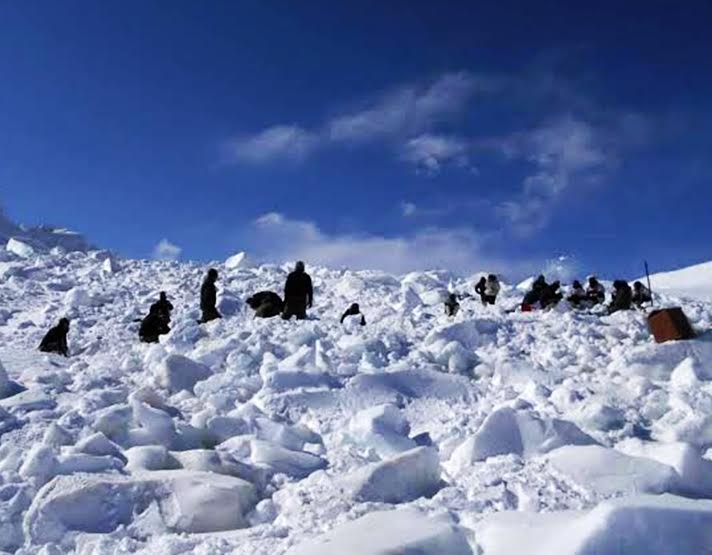by Dr Altaf Ahmad Dar
One of the most emerging volatile zones for Covid-19 today apart from China, Italy, the USA, and Iran is India and Pakistan. With the rising number of cases almost every day, the threat of this pandemic virus in India and Pakistan cannot be overlooked. Developed countries in healthcare system like China, Italy, USA, UK, and Iran could not control the effects of this deadly virus despite having sophisticated healthcare system. If God forbid, it goes out of control as reported by many health experts, it would create havoc in the sub-continent.

Dr Ramanan Laxminaryanan predicts that if India could not implement complete lockdown, 300-500 million Indians could test positive by July 2020. He claimed that nearly 10-15 million people will be affected seriously and most of the infections will be mild, 10 million severe infections will happen within the next two weeks and India does not have such intensive care facilities to handle such scale.
Same is the case of Pakistan where Coronavirus is spreading fast and may take an ugly turn in future because of less awareness among people and defective health care system. Both India and Pakistan cannot enforce long shutdowns because of their fragile economies, poverty and a large number of homeless people. The fact is that India has no defence against Coronavirus.
India has 70,000 hospital beds and only a few ventilators. Those infected who might be able to be saved in developed countries will die in India. Healthcare system of Pakistan is far behind India and is exclusively dependent on China. Some days back they got masks, ventilators and other health care equipment’s from China. Despite foreign visit restrictions, Pakistan’s Prime Minister, Imran Khan sent President of Pakistan and Foreign minister to China for seeking all-weather friend’s help in the healthcare system. Keeping in view the low healthcare facilities in Pakistan, coronavirus may prove more fatal than 2010 floods for Pakistan.
Despite having a very low rank in the health care system, both the nations are spending a large number of their economies on military, warfare and purchasing of weapons. It would have been better for the citizens of both nations if they would have developed their healthcare system. While looking at the comparative defence budget of India and Pakistan they are falling among the topmost countries of the World.
In 2018, India allocated four trillion rupees or 2.1 per cent of its GDP, to support its 1.4 million active troops, according to the International Institute for Strategic Studies (IISS). Pakistan spent 1.26 trillion Pakistani rupees, about 3.6 per cent of its GDP on its troops. It also received $ 100m in foreign military assistance in 2018 as per the estimates of IISS. Both the nations have atomic weapons and ballistic missiles worth of GDP of Nepal, Bangladesh, Sri Lanka and Bhutan, put together.
Both the nations are spending trillions of rupees on Siachen Glacier to maintain their control. According to the Defence Review report, India spends Rs 5 crore every day to ensure safety and supply of food through helicopters for soldiers stationed at the Siachen Glacier. India spends about $200-$300 every year to maintain its dominance on Siachen Glacier. The irony is that as coronavirus cases are rising, New Delhi signed an arms deal with Israel worth hundreds of millions of dollars. Under the agreement, Israel will supply 16,479 Negev light machine guns to India. The move has been criticised by activists, rights groups, health experts and scholars.
A Vanaik, a retired professor of International Relations at the University of Delhi, described the decision as extraordinary and highly condemnable. “India needs every rupee to deal with the very real danger of the coronavirus pandemic spreading in a country of 1.3 billion people living in densely populated cities and towns,” Vanaik was quoted saying. “As it is compared to Europe, North America or even China and other countries in Asia, the medical system here is woefully under-equipped to deal with this emergency. This division of funds is deeply distressing”.

It is not late for the two nations that they learn the lessons from the present situation. It is high time for both the nations to divert their resources from defence to the development of their healthcare system. As India spends 4 times on defence what it does on health. Last year, the government gave only Rs 3200 crore to Ayushman Bharat and spent Rs 59,000 crore on purchasing 36 Rafael fighters.
This is the best time for Narendra Modi led government to learn and take bold decisions about defence budget, arms race, and the Kashmir conflict. Most recently when Article 370 was revoked, crores of rupees were spent for mobilising paramilitary forces. This controversial decision created a huge loss to Jammu and Kashmir economy.

Both the nations need to curtail Kashmir related spending, minimise the strength of military from both the parts of Kashmir and withdraw completely from Siachen Glacier. The distressing time created by Covid-19 demands hard decisions from both the nations related to Kashmir which is a huge burden on the national economies of both the neighbours. The improvement in standards of living, poverty, and employment rests a lot on Kashmir related consensus of both the countries.
Turning to the question in context to Covid-19 and lessons for India and Pakistan, this probably is not the first time that someone has come up with this idea. In one of his articles, Prof Ranjan at South Asian University argues, “The people of South Asia surely deserves a prosperous and peaceful future. The onus is on the leadership of the two biggest countries in the region to deliver”.
(Dr Altaf Ahmad Dar has done doctorate Degree on Peace studies from Pondicherry University. He is currently serving the higher education department and is posted in South Kashmir. Ideas expressed in this essay are personal.)















